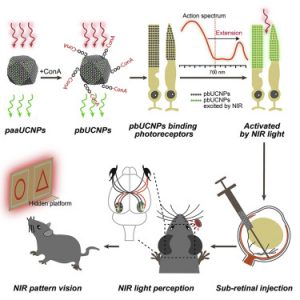Hollywood has long toyed with the idea of superhuman powers, as seen in the 2013 science fiction thriller movie Riddick, where the lead character uses his extraordinary night vision to survive a hostile world. It is one supernatural ability that may be closer to becoming a reality.
According to ScienceDaily, scientists have now made it possible for mice to pick up infrared light with the help of nanotechnology, creating the ability for night vision.
The procedure
It works with a single injection of photoreceptor-binding particles that is inserted into the mice’s eyes, converting photons to high-energy forms that allow the mice to develop infrared vision for up to 10 weeks. The procedure results in minimal side effects and causes no changes to normal vision. (more…)


